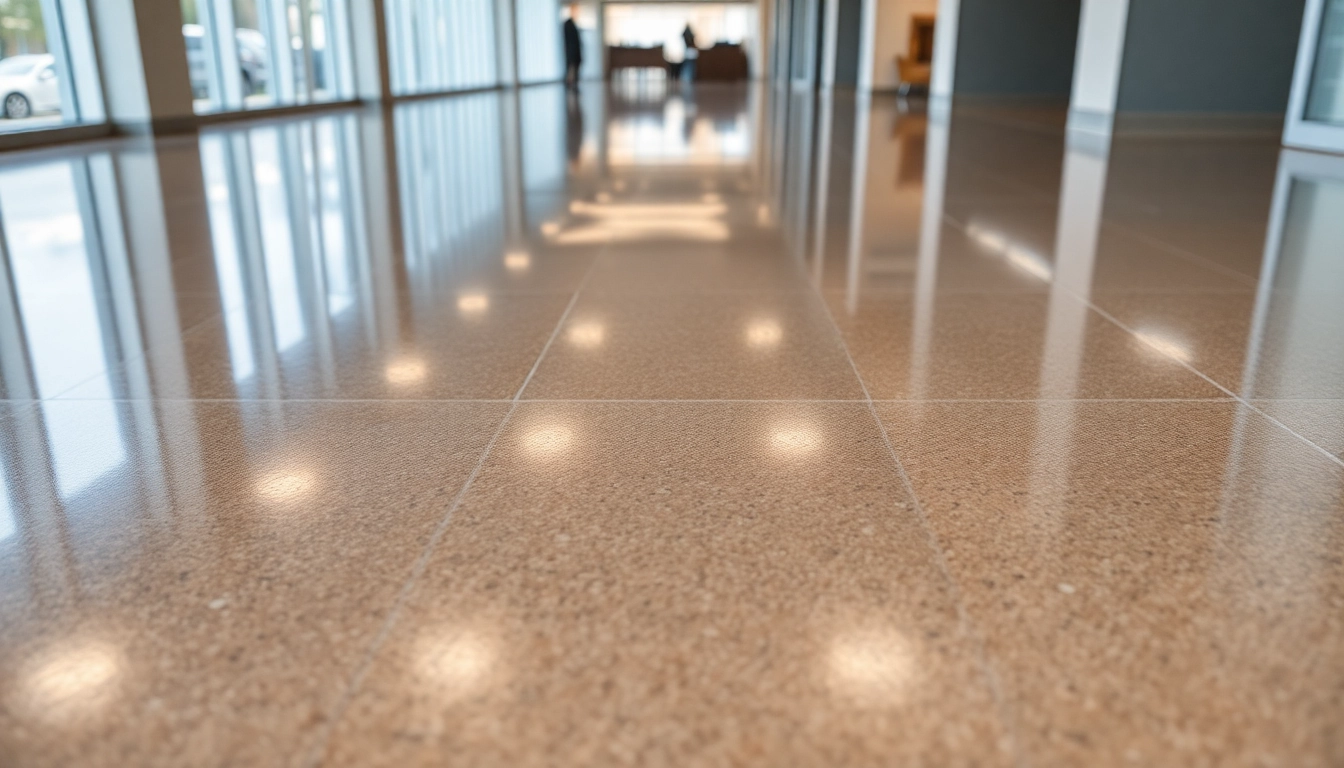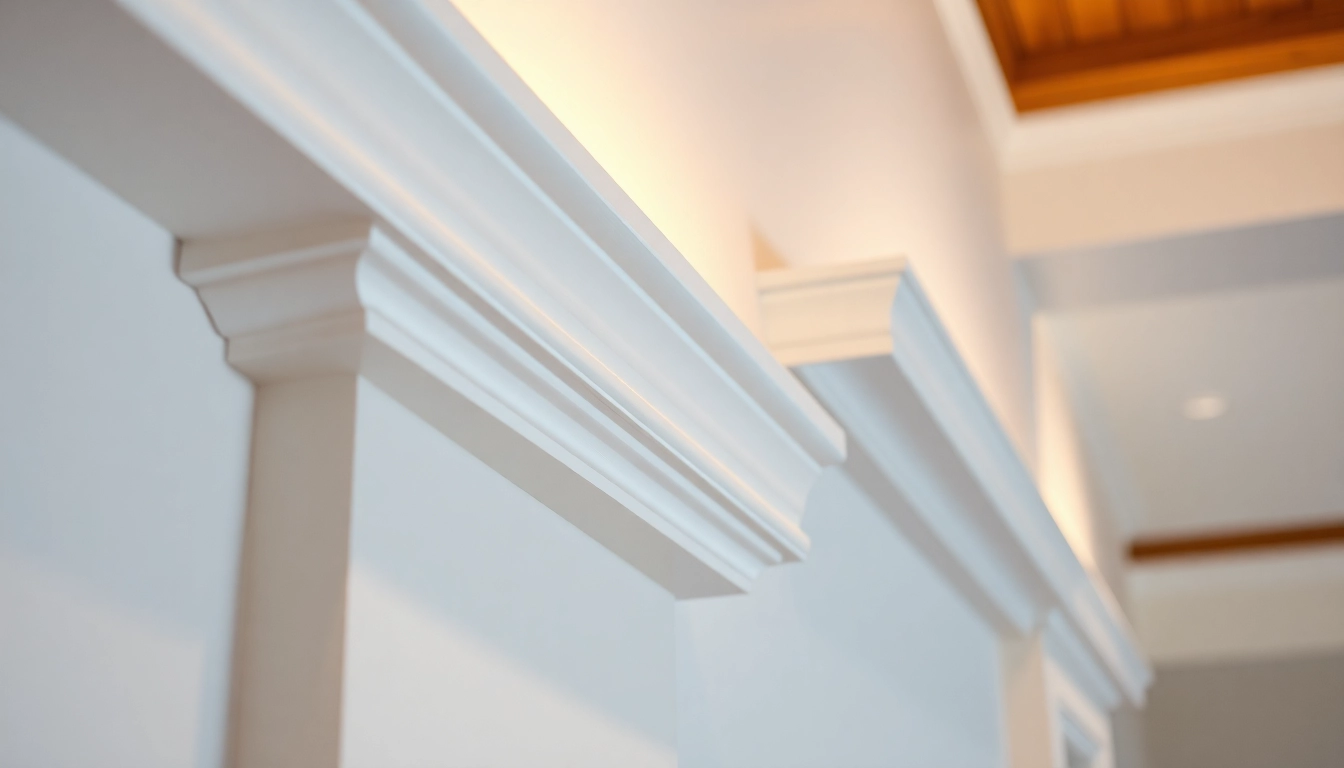Understanding Epoxy Resin Floors: Composition and Benefits
Epoxy resin floors have rapidly gained popularity across both commercial and residential spaces for their durability, aesthetic appeal, and ease of maintenance. At their core, these floors are composed of a mixture of epoxy resin and hardeners, resulting in a highly resilient surface that stands up to heavy foot traffic, chemical spills, and wear over time. Unlike traditional concrete or tile flooring, epoxy floors provide a seamless, corrosion-resistant finish that not only enhances the look of a space but also significantly extends its functional lifespan.
For those considering an upgrade or new installation, understanding the fundamental properties of epoxy resin floors is essential. They are typically applied as a coating over existing concrete or other base surfaces, forming a bond that creates a unified, glossy, and tough layer. This composition offers chemical resistance, impact durability, and versatility in design, making epoxy floors an optimal solution for diverse environments such as factories, garages, retail outlets, and even homes.
1.1 What is an Epoxy Resin Floor?
An epoxy resin floor is a type of flooring system that combines epoxy resin with a hardening agent, creating a chemical reaction that results in a solid, durable surface. The process involves coating the prepared substrate with multiple layers of epoxy, which chemically cure to form a tough, seamless finish. This coating not only provides aesthetic versatility but also offers exceptional resistance to abrasion, impact, and chemical corrosion.
1.2 Key Advantages Over Traditional Flooring
Epoxy resin floors excel in several aspects compared to traditional materials like tile, concrete, or carpet:
- Durability: Highly resistant to wear and tear, ideal for high-traffic areas.
- Chemical Resistance: Withstands acids, alkalis, and solvents, making them suitable for industrial environments.
- Seamless Finish: Eliminates gaps, joints, and grout lines, reducing dirt accumulation and facilitating easy cleaning.
- Customizable Aesthetics: Available in a variety of colors, patterns, and finishes, including metallic and flake textures.
- Fast Installation: Cures quickly, minimizing downtime during installation.
1.3 Common Uses in Commercial and Residential Spaces
Due to their resilience and visual appeal, epoxy floors are suited to a wide range of settings:
- Industrial Facilities: Warehouses, manufacturing plants, and factories benefit from their impact and chemical resistance.
- Commercial Kitchens & Restaurants: Hygiene-critical environments benefit from seamless, washable surfaces.
- Garages & Workshops: Heavy-duty floors that resist oil spills, stains, and tire marks.
- Retail & Showrooms: Aesthetic options to showcase products while maintaining robustness.
- Residential Interiors: Basements, game rooms, or even driveways for a modern, durable finish.
2. Designing Your Epoxy Resin Floor: Styles, Colors, and Finishes
2.1 Popular Aesthetic Options and Effects
Today’s epoxy resin flooring offers an array of design possibilities, enabling customization to match any décor or functional requirement. Popular styles include:
- Solid Color Coatings: Uniform hues for a clean, professional look.
- Quartz or Flake Finishes: Incorporate colored chips or flakes for texture and slip resistance, often used in garages and industrial settings.
- Metallic Epoxy: Dynamic, swirling patterns that create a marbled, high-end appearance, ideal for showrooms or luxury interiors.
- Glow-in-the-Dark and Custom Designs: For themed spaces or safety applications, integrating glow pigments or intricate logos.
2.2 How to Choose the Right Color and Texture
Selecting the appropriate color and texture depends on factors such as environment, lighting, and aesthetic goals. Light colors can brighten spaces and make them appear larger, while darker shades provide a sleek, modern look. Texture choices—from smooth finishes to textured, slip-resistant surfaces—should align with foot traffic, safety requirements, and maintenance considerations.
Consult with professionals or use sample boards to visualize your options, ensuring the final choice harmonizes with your overall interior or exterior design context.
2.3 Incorporating Decorative Elements and Customization
Beyond basic coloring, epoxy floors can be tailored with decorative elements such as metallic pigments, embedded logos, or custom graphics. These enhancements provide branding opportunities for businesses and unique stylistic accents for private spaces. Combining color with patterns like geometric designs or layered effects can significantly elevate the visual impact of your flooring project.
3. Installation Process and Best Practices
3.1 Preparing the Surface for Application
Proper surface preparation is critical to achieving a durable epoxy floor. This often involves cleaning, grinding, or shot-blasting the underlying concrete to remove contaminants, loose particles, and sealers. Profiling the surface ensures optimal adhesion, which is fundamental for long-term performance.
Moisture testing and crack repairs should also be completed before the epoxy application, as underlying issues can compromise the coating’s integrity.
3.2 Step-by-Step Installation Guidelines
- Surface Preparation: Clean thoroughly, level, and profile the substrate.
- Priming: Apply an appropriate primer to enhance adhesion and seal the surface.
- Base Coat: Spread the epoxy resin evenly with suitable tools, ensuring no air bubbles or inconsistencies.
- Decorative Layer: If desired, add flakes, metallic pigments, or other decorative elements during or after the base coat curing.
- Top Coat: Finish with a UV-resistant, clear protective topcoat for gloss, durability, and chemical resistance.
- Curing: Allow sufficient time for each layer to cure as per manufacturer instructions.
3.3 Common Challenges and How to Avoid Them
Key challenges include improper surface preparation, trapping air bubbles, uneven coating thickness, and exposure to moisture. To mitigate these issues:
- Meticulously prepare the substrate with adequate cleaning and profiling.
- Use appropriate tools and techniques to eliminate air entrapment during application.
- Follow manufacturer’s drying and curing times strictly.
- Ensure the environment is within specified temperature and humidity ranges during installation.
4. Maintenance and Longevity of Epoxy Resin Floors
4.1 Cleaning and Care Tips
Maintaining an epoxy floor is straightforward with routine cleaning routines. Use soft mops or sweepers to remove debris and mop with mild detergents to preserve the glossy finish. Avoid abrasive cleaners or tools that might scratch the surface.
4.2 Repair Strategies for Damage or Wear
Minor damages like scratches or chips can often be repaired with epoxy patching compounds. For more extensive damage, you may need to recoat affected areas or perform spot repairs ensuring consistency with existing layers. Regular inspections can help identify issues early, prolonging the lifespan of your flooring system.
4.3 Extending the Lifespan of Your Epoxy Floor
Applying protective topcoats periodically, avoiding harsh chemicals, and prompt repair of damages are crucial steps to extend your epoxy floor’s useful life. Proper weight distribution and usage guidelines also help prevent unnecessary wear.
5. Making the Right Choice: Selecting Quality Epoxy Products and Experts
5.1 Criteria for Evaluating Epoxy Flooring Kits
When selecting an epoxy resin floor system, consider factors such as resin quality, user reviews, price point, and included accessories. A reputable kit should contain high-grade epoxy, clear instructions, and necessary components for professional finish and durability. For instance, products like the Rockhard USA Epoxy Resin Floor Coating System demonstrate the quality and robustness suitable for demanding environments.
5.2 When to Hire Professional Installers
While DIY epoxy applications are possible for smaller or less complex projects, professional installation is recommended for large-scale or high-performance floors. Experts ensure surface preparation, proper mixing, application, and curing, minimizing issues and guaranteeing a professional finish that complies with industry standards.
5.3 Comparing Leading Brands and Their Features
Leading brands such as Stone Coat, Epodex, and Sherwin-Williams offer a variety of epoxy systems tailored to specific needs. Attributes to compare include chemical resistance, UV stability, aesthetic options, and price. For example, Stone Coat’s systems are renowned for their chemical resistance and sleek finish, making them popular choices in demanding industrial settings.




